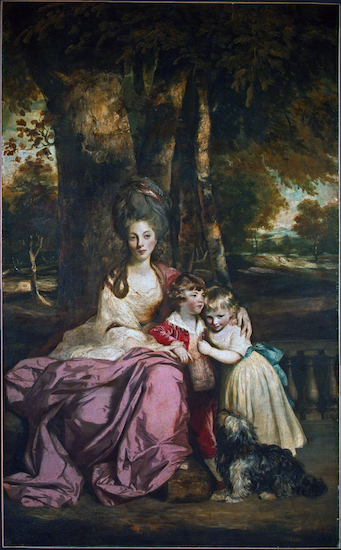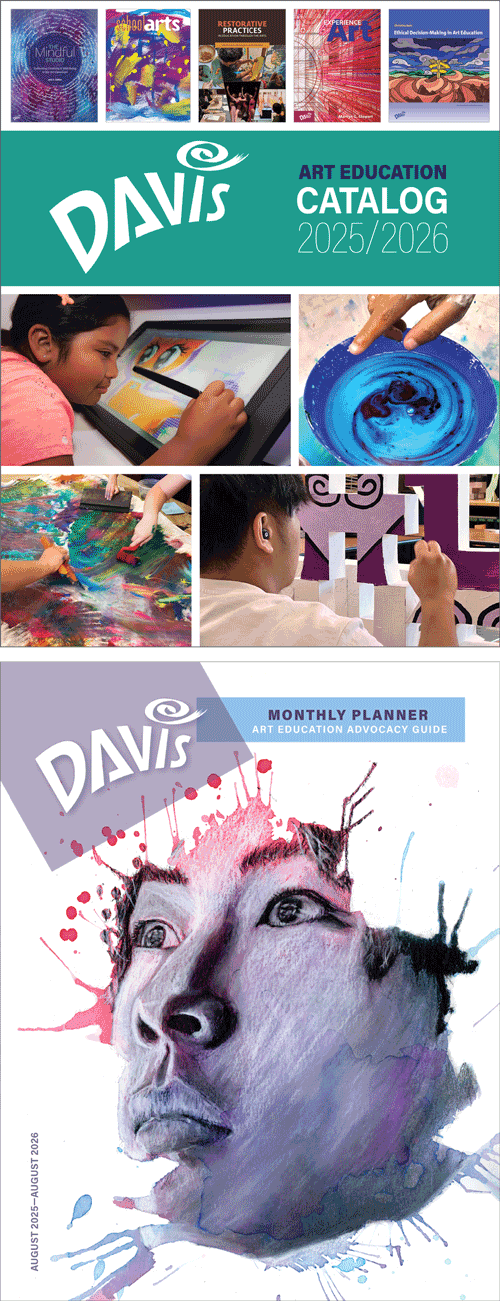Artist Birthday: Joshua Reynolds
Joshua Reynolds was part of the important first generation of native British artists who emerged after the Baroque period (1600–1750) that was marked by a dominance by foreign—mostly Flemish—artists. They adapted stylistic tendencies from these foreign artists to develop a unique, elegant, and sophisticated British portrait style.
Artist Birthday for 16 July: Joshua Reynolds (1723–1792, Britain)
Joshua Reynolds was part of the late Baroque flourishing of native British artists in the mid- to late 1700s.
 |
| Joshua Reynolds, Lady Elizabeth Delmé and her Children, 1777–1779. Oil on canvas, 239.9 x 147.8 cm. Image © 2025 National Gallery of Art, Washington. (NGA-P0151) |
Despite his constant efforts at "educating" British artists about the value of classicizing subjects, Reynolds too was bound by his patrons' tastes—and money—when it came to many of his portraits of the wealthy. Although he had already (1765) produced such classicized portraits as Lady Sarah Bunbury Sacrificing to the Graces (Art Institute of Chicago, Davis #AIC-6242), he was still producing stridently British Rococo portraits such as this one.
The British portrait style of the 1700s was a great influence on American artists in the colonies. There is a certain romantic nostalgia for the "good old days" of the early 1600s in the dress of the wealthy during the Rococo period. Portraits were often staged in the park (or a facsimile of it) of the family estate in order to demonstrate their status. Trees are indistinct botanically, and appear as cotton candy fluff in the background. This family is dressed in what was considered "casual" at the time for the upper class, with a vague allusion to classical drapery across the woman's lap. The features of these privileged few have been idealized to the point where they don't seem like real individuals, but rather an ancient Greek goddess and a couple of putti. There's the classicism aspect of this portrait!
The Baroque period in Britain was dominated by artists from Europe: Peter Paul Rubens (1577–1640), Antonie van Dyck (1599–1641), and Peter Lely (1618–1680) for example. Despite the Royal Academy's tyrannical existence in London, unlike France, British art was not dominated by artists preferred by the court. The passing of the generation of foreign Baroque painters led Britain in the 1700s to focus on regional schools of art, particularly in the areas of landscape and portraiture.
While Baroque ideals of celebration of the ruling class and drama in historical subjects persisted, 1700s painting in Britain is characterized overall by turning inward and examining British life, scientific advances, and the British landscape. It is a more restrained and less artificial Rococo style than on the Continent, and has an anecdotal quality similar to Dutch Baroque genre of the 1600s. By the late 1750s, after the discovery of the ruins of the Roman city of Pompeii in 1748 and the revival of a mania for all things classical, classicism was embraced enthusiastically by British artists as well.
Reynolds was born in Devonshire, son of the headmaster of a private academy. He was well educated in the writings and art of classical antiquity, receiving an education better than most of his fellow artists of the period. From an early age he wished to be an artist, training starting in 1740 with the society portrait painter Thomas Hudson (1701–1779), a competent artist whose reserved, realistic style was much copied by American artists of the time. He also studied great masters of western painting from the Renaissance and Baroque, and was particularly affected early on by the portraits of van Dyck, Rembrandt (1606–1669) and Rubens.
During an extended trip to Italy in 1749 Reynolds studied ancient Greek and Roman antique art and Renaissance painting. He was particularly impacted by Venetian Renaissance artists such as Titian with their painterly surfaces, tenebrism and vibrant color. His trip to Italy cemented his belief that with a scholarly approach to paintings, using one's knowledge of classicism and the Renaissance heritage, British painting could be "elevated" to a higher state. In 1753 he settled in London for the rest of his life.
Reynolds believed that artists should emulate great artists from the Renaissance, because the influence of Classicism elevated works of art beyond mere imitation of observed reality. The combination of classical mythology or history with a portrait is known as the Grand Manner. Reynolds devised his own way to portray the specific features of a sitter while elevating the portrait to pseudo-history painting status with "classicism." He was one of the founding members of the British Royal Academy, and its first president. Reynolds used the Academy to advocate his views of what the nature of British painting should be.

Comments